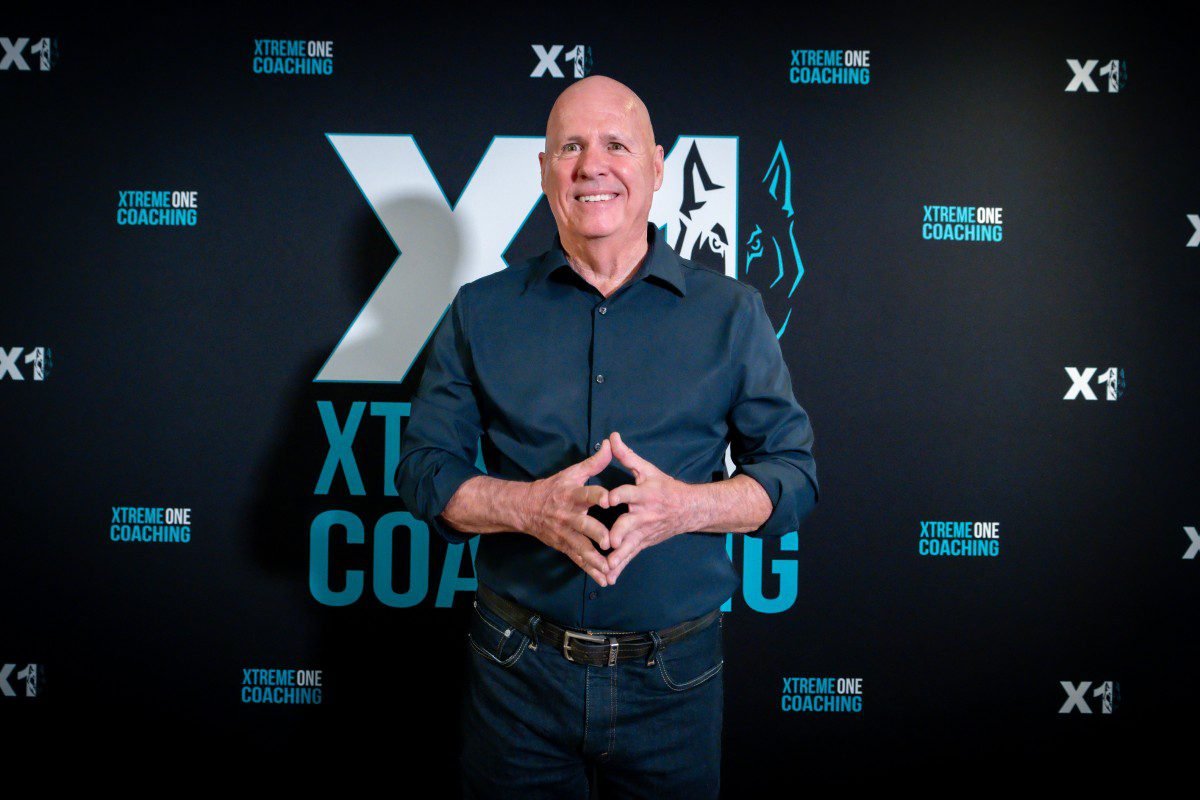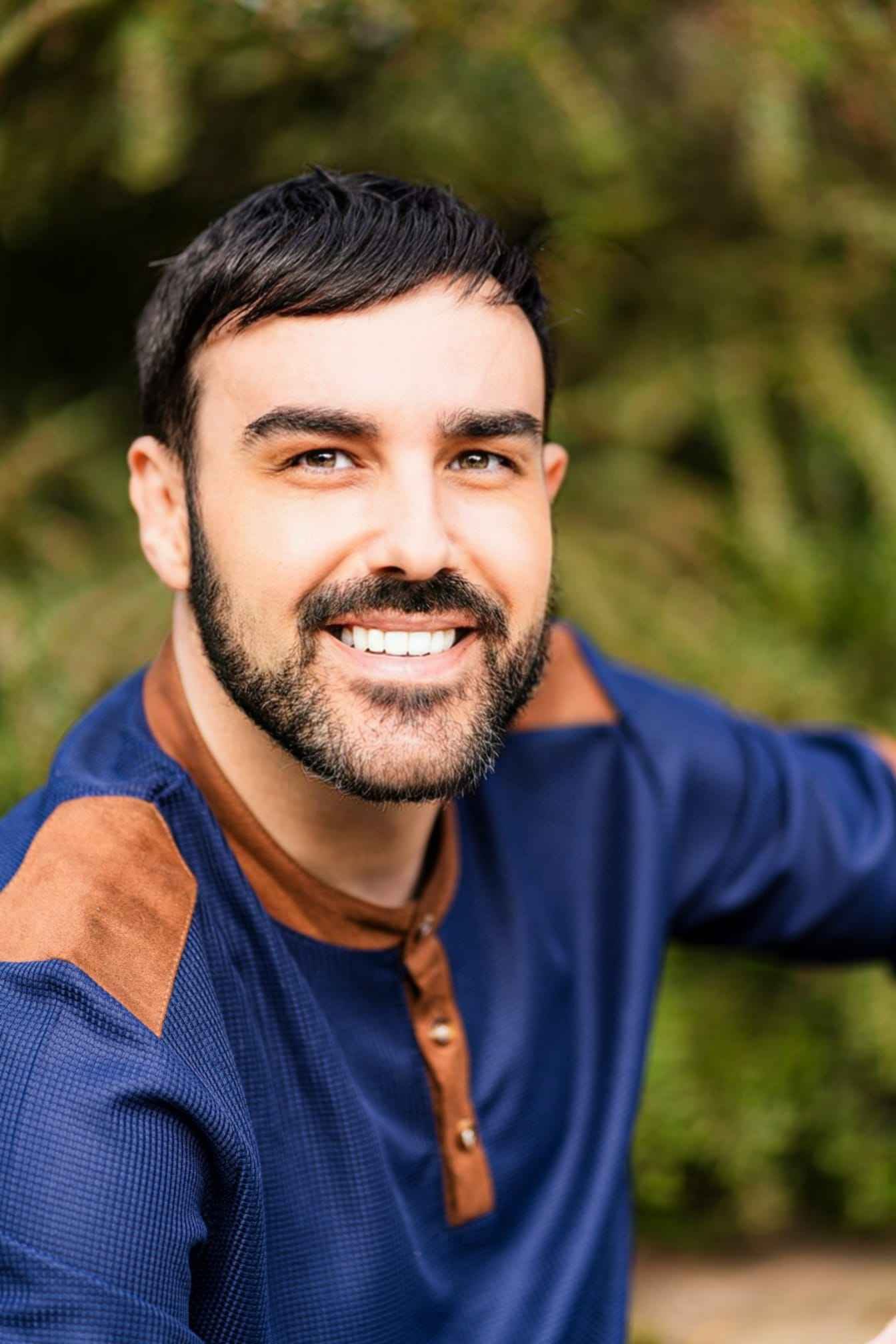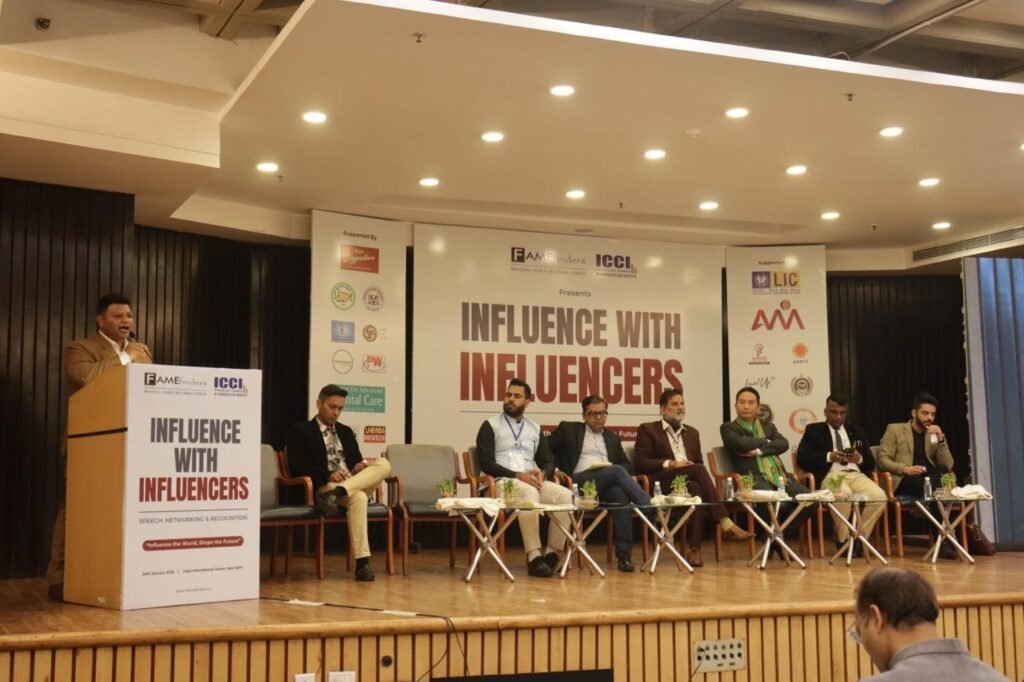Entrepreneurs
Things To Remember When Deciding To Invest Your Non-Retirement Funds
Published
2 years agoon

In the past three years, we saw how life could be fleeting and brittle, just like a thread. In the wink of an eye, it may break or shred when we least expect it. Indeed, life is too short to spend on our stressful nine-to-five jobs or risky businesses.
The unprecedented events that have transpired showed nothing was wrong with exploring everything the world has to offer. Leisure travel and experiences are priceless investments in ourselves.
But let’s face it. What will happen when we can’t make a living or find a secure income stream anymore? What will happen to us when we enter our golden years? As repetitive and monotonous as it may sound, we must plan for our future. We already know it for sure. Yet, we don’t know precisely how to achieve our financial investing goals.
With the current macroeconomic conditions, we must have substantial money in our retirement or investment account to ensure a comfortable retirement life down the road. It allows us to be financially secure or independent without a job or a business. Therefore, we will not have to bother our successors when the time comes.
But that is not the sole upside of retirement planning. Investing in a retirement plan or having non-retirement investments has become more vital than ever. If we do it as early as possible, we can earn more. Our retirement accounts, savings accounts, investment accounts, and brokerage accounts can promise higher income, allowing us to retire early. It will also allow us to reap the returns of our retirement and investment strategy while we still have energy.
This article will focus on building and protecting your retirement and non-retirement funds. We will provide tips to increase and diversify your non-retirement investments in your portfolio. Also, we will help you optimize your non-retirement accounts and maximize savings.
Inflation and Retirement in the US
Retirement is almost every employee’s goal. The idea of not dragging yourself out of bed when the alarm goes off is appealing. We will not have to skip breakfasts and queue up while checking our phones to catch the bus or train. Even better, we will not have to work overtime to meet endless deadlines. We will have all the time in the world to do everything we have always wanted. Travel? Reading books all day? Watching our favorite series? Spending more time with families and friends? Put up a business where we will be our own boss? No matter how old we are, we yearn for something we can’t get or do while working.
However, the current macroeconomic indicators are not on our side. Of course, I am optimistic about the improvement in the latter part of 2023. But we must deal with the potential economic slowdown in the first half.

No law prohibits anyone from retiring before they reach the age of 66 or 67. About 50% of employees aged at least 55 have retired from work in the past three years. Also, nearly one in five employees retired before the age of 65. Others aim to retire when they turn 55. but the younger generations wish to retire at 40.
Sadly, the scar of economic crises in 2004-2008 remained evident even after a decade. Many would-be retirees were forced to use their retirement savings accounts to cover household expenses. Likewise, many seniors and retirees had to live in debt. After the crisis, we learned the importance of retirement planning.
The situation has remained bland in the last year while economic forecasts were still bleak. Although unemployment is still a far cry from the labor market scenario in 2009, older adults are still wary. They don’t mind extending their working years to meet their daily expenses or increase their retirement funds. The sharp spike in inflation is one of their motivations.
In a recent study, about half of adult workers are planning to stay out of retirement. In fact, over 30% of workers in their fifties plan to postpone their retirement. Meanwhile, about 20% of workers in their sixties will work longer. With that, the average retirement age in the US is 66 vs. 62 in 2022. Although it’s the same as the legal retirement age, the increase has been noticeable. We must also note that the retirement delay rate has doubled in the last two years.
Moreover, the impact of inflation has already extended to retirement savings. Another recent study shows that 50% of workers paused their retirement savings in 2022. Over 40% stopped putting money into retirement funds like 401 (k). Even more, almost one-third of employees withdrew some of their retirement savings. The cost-of-living hike drove all these. So, it is unsurprising that 72% of the respondents have already reassessed their retirement plans. Among them, 27% reevaluated their financial goals and strategies.
But this year, we may see an improvement as inflation continues to relax. We started 2023 with inflation landing at 6.4%, a 30% drop from the 2022 peak. Indeed, the efforts of policymakers have started to pay off. Meanwhile, the Fed stays conservative as it keeps increasing interest rates. They may peak this year, but increments may slow down while inflation decreases. The impact may materialize in the second half, which can reduce the cost of living in the US. Even better, I don’t think the potential economic slowdown will lead to a deep recession. After all, inflation was more of a demand-pull than a cost-push. As demand softens and supply chain bottlenecks clear up, the market may correct itself and bounce back.
Likewise, retirees are optimistic about the economic conditions in the US. The same study shows that 57% believe the economy will be more robust this year. Also, over 60% expect an improvement in their retirement plans. Recessionary fears are still present, but pessimism is starting to waver. In the long run, macroeconomic indicators may become more stable. Adult workers may have more excess money for retirement funds and non-retirement investments.
Growing Your Funds: The Basics of Retirement vs. Non-Retirement Investments
Many people invest most of their savings and investments in individual retirement accounts. Yes, maximizing their potential in growing your retirement funds is essential. Even so, you may look at other efficient options if you have extra income to invest.
For many, maxing out their annual contribution limits on traditional IRA or Roth IRA is enough. But we must find other investments to increase our wealth. These investments, often called non-retirement investments, do not require a special investment account. You will only have to contribute after-tax dollars to these investments. Also, you can access them whenever you want, wherever you are. That is why it is crucial to seek help from a financial advisor to get the right investment advice and strategy.
Luckily, we have different non-retirement investments to choose from. It may be easier for you if you have a background in the financial market. If not, fret not, for we are here to guide you throughout your investment journey. You can find the things you need to learn in this article. But before that, we must first differentiate retirement and non-retirement investments. We will discuss their basics to help you understand better how they work. Here are the two investment choices for you.
Retirement Investment Accounts
Retirement investment accounts are qualified investments due to their qualification for beneficial tax treatments. We can make either pre-tax or after-tax contributions. Also, investment yields are tax-deferred until you make account withdrawals.
They have annual contribution limits and early withdrawal penalties before you turn 59 ½. The typical qualified accounts are 401(k)s, 403(b)s, and other employer-sponsored retirement plans. Individual retirement accounts (IRAs)s are part of qualified investments. They also have annual contribution limits and preferential tax treatment.
Employer-sponsored retirement plans are popular because most employers match employee contributions to a maximum rate. Even more important is the familiarity of older adults with these plans, so they often invest their funds there. These are easier to manage since their contributions are automatically deducted from their paycheck. As such, convenience becomes inertia in investing.
Non-Retirement Investment Accounts
Non-retirement investments allow you to invest without investing in a tax-advantaged retirement account. You can access this type of investment anytime and anywhere. You can have numerous goals when opening an account. For instance, you can invest to increase your retirement wealth or grow your extra dollars for future use. Put simply, non-retirement investment accounts are investments aside from defined benefit and retirement plans.
This investment type can be anything from the same stocks you hold in your 401(k) to purchasing properties or investing in a private or publicly-traded business. Again, the goal is to increase wealth matching your need for capital. Of course, it comes at a greater risk due to higher reward potential than just saving money for retirement.
Moreover, non-retirement investments are non-qualified accounts, meaning you invest using after-tax dollars. Unlike employer-sponsored retirement plans, one benefit of non-retirement investments is your control over them. You are free to choose whatever investments are available in the market. It also allows you to make your own investment strategy since it doesn’t have rules and limits. You can withdraw or sell it, but yields are subject to capital gains tax.
But before venturing into non-retirement investments, you must ensure financial security. You may start by determining whether you have adequate money in your retirement account. Do you have enough funds in your retirement accounts for your retirement goals? Do you have emergency funds that will last for three to six months? What are your risk tolerance and financial goals? Doing so will help you become more organized and strategic in handling, increasing, and protecting your assets.
You must also consider investment fees, especially when opening a brokerage account. You may go solo, but letting an expert do everything on your behalf will also be helpful. Also, your risk tolerance will dictate the volatility you can tolerate. Meanwhile, your time horizon will reveal your investment preference. It works hand-in-hand with risk tolerance since financial goals in the short run are suitable for less volatile investments like bonds and time deposits.
Things To Do When Investing Your Non-Retirement Funds
A lot of non-retirement investment advice includes complex formulas and strategies. But sometimes, you only need to pause and look at the bigger picture before deciding. Non-qualified or non-retirement investments promise more returns, but risks are higher. These are the essential things to remember to make your investment journey easier and more efficient.
Check retirement investment options
There are various tax-advantaged and taxable accounts for retirement investments. While you can access it in a bank and other financial intermediaries, your employers may be better. Traditional IRAs, 401(k) plans, defined benefit plans, and Roth IRAs are typical options. But know that you can only invest in the available options per account.
Maximize the advantages of retirement funds
Before investing your non-retirement funds, you must max out all your retirement funds. With the volatile economy and recession fears, it is crucial to maximizing the advantages of retirement plans like 401 (k)s. For instance, if you avail of a plan from your company, it will match your contributions at a certain limit. Basically, that’s free money in a secure and risk-free account. Also, Roth IRAs earn tax-free until you withdraw them.
Start early, earn exponentially
The early bird, indeed, catches the worm. If you start saving and investing early, you have more time to study your investment options and grow your funds. You also have better flexibility to market volatility since you are more familiar with the market trend. As such, you can cope with it through prudent portfolio diversification in technology stocks, bonds, and funds. Aside from that, there are better reasons why saving and investing early can be helpful.
- You will have more time to optimize the potential of compounding interest. You have more time to generate and reinvest investment yields in other accounts. For instance, you invest $5,000 with a compounding interest of 5% yearly. If you invest at 25 and retire at 66, the future value will be $36,959. But if you don’t invest until you’re 45, you will only have $13,930.
- You will be more disciplined, making saving and investing a lifetime habit.
- You will have more time to cope and bounce back from investment losses. With that, you can also try other investments, especially those with high risk and reward potential.
- More years to save means more money upon retirement.
- More experience in investing means expertise in various investment types. It will allow you to go solo and avoid brokerage fees.
Assess your assets and liabilities
In the world of investing, you must spend money first before you earn more money. So before you invest, you must assess your financial capacity to do so. You can start by assessing your net worth, the difference between assets and liabilities.
Your assets include cash and cash equivalents, such as cash on hand, cash in banks, and short-term investments. Other assets are in the form of real properties like houses and personal properties like jewelry. Meanwhile, liabilities include car loans, mortgages, student loans, medical expenses, and unpaid household bills.
Once you list all assets and liabilities, subtract the total liabilities from your total assets. The net value will be your net worth. Then, you can add your net worth to your retirement goals. You can check your net worth from time to time to see if it is in line with your goals. A negative net worth means you have excessive liabilities and no room for more risks. From there, you can find ways to improve your finances before starting your investment plan. Remember that liquidity is king, so you must manage your cash well to increase and protect your wealth.
Manage your emotions well
Crests and troughs are constant in the world of investing. One of the first things to learn is to manage your emotions well. Often, investors are carried away by market sentiments. Bearish views are common during market corrections, so beware.
Typically, an investor may become overconfident when investments perform well. He tends to underestimate market risks, leading to a bad investment decision. Meanwhile, an investor becomes anxious when assets are in a downtrend. He may sell investments instantly, even at a discount, leading to investment losses. Corrections are more common in the stock market. So, investors must be keen during a breakout to avoid bull or bear traps.
As such, it is crucial to avoid becoming an emotional investor. Overconfidence and anxiety may lead to wrong investment decisions. You may lose potential gains or even incur investment losses. Aside from that, you must be realistic with your investments. Observe the actual price and financial trend instead of solely relying on market sentiments. Reading expert analyses and reviews may help, but it’s more important for you or your broker to understand the investment. Also, you may rebalance or diversify your portfolio to make it suitable for whatever market condition.
Consider investment fees
More often than not, your concern revolves around returns and taxes. But exorbitant investment fees may erode the value of your investment. Transaction, brokerage, and administration fees are typical deductions from your funds. You must check them as frequently as you can since fees can offset gains. Calculate the expense ratio to know how much your investments are used for administrative and other expenses. You can divide the fund’s operating expenses by the average dollar value of assets under management (AUM).
Doing so can help you make better investment decisions. That way, you can find more affordable but earning investments. You can choose mutual funds with lower fees or brokers with more reasonable fees.
Suppose you invest $5,000 in a mutual fund with a 2% expense ratio and 5% annualized return. If you withdraw it after 20 years, the gross value will be $13,266. But with the expense ratio, leading to fees of $4,236, you will only get $9,030. But in a fund with an expense ratio of 1%, fees will only be $2,311. The net value will be $10,956. That’s a $1,936 difference.
Avail of insurance or annuities
In general, investments are good. But there’s an unspoken rule to follow when managing your assets. Again, liquidity is king, so always prioritize having enough cash reserves. Once you have enough savings and emergency funds, you may set aside a portion of your income for investments. Then, you must ensure your assets are protected. Insurance and annuities can serve as an extra mantle of financial protection. You will not have to sell your investments at a discount or deplete your savings in emergencies. Insurance will come first before your turn to your emergency funds and savings.
Speak to an expert
You may find yourself saying retirement planning or investing is not your thing. That’s inexcusable. Many financial experts are dedicated to helping you plan for your retirement and investment. Also, you can watch video tutorials or read helpful articles for free.
Non-Retirement Investments To Consider
At this point, you already know the basics of non-retirement investing. These are the investment options you can consider.
Brokerage Accounts
Brokerage accounts are probably the most typical option for non-retirement investing. These are non-qualified accounts, so funding is done with after-tax dollars. With a brokerage account, you can choose from various investment types, depending on your risk profile. These include stocks, exchange-traded funds (ETFs), bonds, and target-date funds.
Among these, stocks are the optimal option, given their high risk and reward potential. But these may require more experience since investors and brokers have to watch price trends, company financials, and market changes. You must value the stock using different price metrics when doing fundamental analysis. Doing so will help you determine if the stock price reflects the company’s intrinsic value. Meanwhile, if you prefer technical analysis, you must observe stock price changes to know when to sell or buy.
Today, it is easy to open a brokerage account. You can do it online as online brokerages become more prolific and impose lower fees. But you have to be more careful to avoid a potential scam. Also, you can find brokerages with higher brokerage fees due to their excellent customer service. Always check their fees and match them with their expertise and quality of service.
Property
Buying properties as passive income is a traditional real estate investment method. You can buy and sell properties or buy and lease them out. Yet today, more common investments, such as real estate investment trusts (REITs) and crowd-funded real estate, are available.
However, many analysts are pessimistic about the real estate performance this year. Property sales and prices are cooling down. Despite all these, I disagree with those anticipating a real estate market crash. First, commercial and residential property shortages remain high. The year started with a 4% decrease in property inventories. We can attribute it to builders becoming more cautious since the Great Recession. With the current supply and demand, price changes may remain manageable.
Educational Plan
Educational plans are another non-tax-deductible savings plan account. Funds can be invested with non-taxable earnings. Even better, withdrawals are taxable for education-related expenses, such as tuition fees and books. It will be helpful if you plan to build a family and expect your child to attend college. But remember that non-educational expense-related withdrawals are taxable with a 10% penalty.
Certificate of Deposits
Certificates of deposit (CDs) are like bonds, but banks and credit unions issue them. It is also logical to classify them as time deposits because they have a fixed term and pay periodic interest. They mature after a certain period, often within a year. Since banks often issue them, they are FDIC-insured, which pays interest. Also, like bonds, they have low risks and lower yields, unlike the other investments on the list.
Government Bonds
There are various types of bonds, but those issued by the government yield some interests with manageable risks. Municipal bonds, treasury bonds, and federal bonds are some typical options. Even better, they are more inflation-linked than corporate and mortgage-backed bonds. Note that most bonds do not perform well in a high-inflation environment. Given the nature of government bonds, they still have decent yields amidst inflation. They also have a better hedge against valuation losses. But overall, bonds have low risk and reward potential.
Learn More About Non-Retirement Investing
Having a consistent income stream is crucial for retirement planning. A passive income can help increase and protect your wealth. As such, investing your non-retirement funds can provide more returns in your retirement years. It is more essential today, given the economic volatility. But no matter how promising they can be, you must be careful and familiar with them before venturing. You must have adequate knowledge, capacity, and patience to do so. Thankfully, various types of investments suit your finances and risk preferences. There are also experts to provide all the help you need for sound investment decisions.
The post Things To Remember When Deciding To Invest Your Non-Retirement Funds appeared first on Due.
Sahil Sachdeva is the CEO of Level Up Holdings, a Personal Branding agency. He creates elite personal brands through social media growth and top tier press features.

You may like
Entrepreneurs
From Side Hustle to $7M Brand: The Rise of Sleepy Sundays
Published
22 hours agoon
April 4, 2025
“How a 26-year-old turned a cozy clothing idea into a cult empire”
When Ava Monroe posted three pastel loungewear sets on TikTok in 2022, she didn’t expect a revolution. But three years later, her brand, Sleepy Sundays, has turned into a $7 million sensation—featured in Vogue, stocked in Nordstrom, and worn by influencers across the U.S.
What began as a weekend hobby is now one of the most talked-about indie fashion brands in the loungewear space. But this isn’t just a feel-good tale of virality—it’s a blueprint for modern entrepreneurship.
The Spark: A TikTok, a Question, and 50 Preorders
It all started with a video captioned, “Why is cute loungewear either super expensive or super ugly?”
That single question, shared to a few hundred followers on a sleepy Sunday night, triggered an avalanche. By the next morning, Ava had 50 preorders. She didn’t even have a business name yet—just a sewing machine, three fabric rolls, and her mom helping her cut patterns in their dining room.
That question became a brand.
That brand became a movement.
From Bedroom Business to Viral Brand
Ava didn’t rush. She made each order by hand for the first three months, testing styles and fabrics. When customer feedback exploded—“This is softer than SKIMS,” one commented—she knew she was onto something.
In early 2023, Ava partnered with a local ethical manufacturer. She built a Shopify store, set up a mailing list, and launched a simple but effective drop model: new colors every Sunday at 10 a.m. PST. The result? Scarcity + ritual = obsession.
Shoppers set alarms. Sets sold out in minutes. “I got cart-jacked twice!” one fan posted.
Within a year, revenue skyrocketed by 400%, with almost no paid advertising. Just TikTok and word of mouth.

Brand Aesthetic That Sells Itself
From her color palette (muted pastels + earthy tones) to her minimalist packaging, Ava understood her audience deeply: Gen Z women who craved both comfort and cool.
Sleepy Sundays didn’t just sell clothes—they sold a feeling. A Sunday morning vibe. A lifestyle where softness wasn’t just physical, but emotional. Every product came with a handwritten note and a Spotify playlist link. Details mattered.
Smart Scaling: Growth Without Chaos
In mid-2024, Ava secured a $250,000 angel investment to hire a small team—two full-time designers, a content strategist, and a logistics manager. The brand stayed lean and profitable.
Instead of expanding to dozens of products, Ava stuck to three core items: the “Cloud Set” (her original bestseller), the “Drift Robe,” and the “Midnight Romper.” Each was released in small batches, allowing for feedback-driven iteration and nearly zero inventory waste.
By Q4 2024, she was generating $580,000/month in revenue, with a loyal following and 40% repeat purchase rate.
Social Strategy: Mastering TikTok’s Algorithm
TikTok wasn’t just Ava’s launchpad—it was her marketing backbone. 85% of her traffic still comes from short-form content. Her strategy?
-
No hard selling. Just storytelling, outfit inspiration, and behind-the-scenes content.
-
Customer features. Real people wearing the product in their homes.
-
Aesthetic consistency. Every post felt like part of the same cozy universe.
-
Authenticity. Ava appears often on camera, unfiltered, sharing struggles and wins.
A 15-second video showing her dog sleeping next to folded loungewear went viral with 3.2M views. The caption? “It’s called brand alignment.”
Lessons for Entrepreneurs
There’s more to this story than fabric and filters. Ava’s journey offers powerful lessons:
-
Start before you’re ready. Ava didn’t have a business plan—just a question and a sewing kit.
-
Lean works. For 18 months, she ran everything from her bedroom: design, fulfillment, customer service, content. Constraints became creative fuel.
-
Purpose > product. People didn’t just buy sets—they bought into Ava’s ethos of softness, self-care, and slow living.
-
Be human. Every mistake she made (delayed shipments, wrong sizes) was owned publicly and turned into relatable content. Transparency built trust.
Challenges Along the Way
Not everything was smooth.
Managing explosive growth while maintaining quality was hard. In late 2023, a batch of defective stitching led to 300 refund requests. Ava posted a TikTok addressing it: “We messed up. Here’s what we’re doing to fix it.” The video gained 1M likes—and strengthened customer loyalty.
Another challenge? Copycats. Fast-fashion giants began mimicking her designs. But Ava stayed focused. “You can copy the clothes, but not the connection,” she said.
Where Sleepy Sundays Goes Next
In 2025, Ava plans to open a pop-up experience store in Los Angeles—not to push product, but to build community. Picture a space with a reading nook, fresh tea, cozy corners to nap, and exclusive try-ons.
She’s also launching Sleepy Kids, a mini collection designed for children with sensory sensitivities. The idea came from DMs she received from parents of autistic kids who loved the fabric feel.
This isn’t a brand chasing trends. It’s one building a universe.
Level Up Insight:
In today’s digital economy, authenticity scales faster than ads. Entrepreneurs who build communities, not just companies, are rewriting the rules. Ava Monroe didn’t just sell loungewear—she sold a feeling, a moment, a message: you deserve softness.
Her story proves that sometimes, the most powerful businesses start from the most personal places. Like a question asked on a Sunday.
Entrepreneurs
U.S. Entrepreneurial Activity Surges to Historic Highs
Published
2 days agoon
April 3, 2025
Entrepreneurship in the United States is experiencing a powerful resurgence, with new business creation reaching historic highs. According to the latest research, 19% of adults are now actively engaged in starting or running a new business—matching record levels from two years ago. This renewed surge highlights the resilience, ambition, and creativity of the American entrepreneurial spirit.
However, beneath this impressive growth, deeper trends are shaping the entrepreneurial landscape. Many are launching businesses out of necessity rather than opportunity, digital transformation is reshaping operations, and certain demographics—including veterans, women, and minority groups—are making significant strides in the entrepreneurial space. These shifts underscore the need for policies and support systems that nurture business sustainability and long-term success.
Entrepreneurial Growth: A Double-Edged Sword?
While high levels of entrepreneurial activity signal innovation and economic dynamism, they also point to underlying challenges. More than two-thirds of entrepreneurs cite job scarcity as a primary motivation for starting a business. This trend has been increasing since 2022, suggesting that necessity, rather than pure opportunity, is driving many into self-employment.
At the same time, the number of mature business owners remains low. Only 6.6% of Americans operate established businesses—far below the average of other high-income nations. Business closures are also rising, primarily due to financial struggles and profitability issues. These statistics highlight the fragile nature of many startups, emphasizing the need for better access to capital, mentorship, and long-term stability strategies.
Women Entrepreneurs: Closing the Confidence Gap
Women’s participation in entrepreneurship is gaining momentum, with an increasing number of women recognizing their capabilities in the business world. In 2024, their confidence in starting businesses rose significantly compared to the previous year. However, a gender gap still exists—only 48% of women felt capable of starting a business compared to 63% of men.
A notable positive trend is the increase in women-led businesses expanding into international markets. In 2024, 27% of female entrepreneurs reported global market activity—a jump of nearly 25% from the previous year, bringing them to the same level as their male counterparts.
While these statistics showcase resilience and progress, the lingering perception gap suggests that fostering supportive ecosystems—through mentorship, funding access, and policy incentives—is crucial for ensuring that more women confidently step into entrepreneurship.
The Digital Revolution: Entrepreneurs Embrace AI and E-Commerce
Technology continues to redefine how businesses operate, with digital sales and artificial intelligence (AI) adoption surging among entrepreneurs.
- 68% of entrepreneurs and 47% of business owners report that at least a quarter of their sales come from digital channels.
- 63% of entrepreneurs and 49% of business owners already use AI, and even more expect it to become a critical part of their business strategies in the next three years.
- 91% of entrepreneurs rely on social media, and 81% use data analytics to drive decision-making.
These trends emphasize the increasing reliance on digital tools to enhance efficiency, optimize marketing strategies, and boost customer engagement. However, while digital transformation presents vast opportunities, it also raises concerns about data privacy, cybersecurity, and the need for widespread tech education. Addressing these challenges can further empower small businesses to remain competitive in the evolving digital landscape.

Optimism and Opportunity: The Power of Diversity in Entrepreneurship
The entrepreneurial mindset varies across different demographics, with Black and Hispanic entrepreneurs demonstrating higher levels of optimism, opportunity perception, and risk-taking than their White counterparts.
- 90% of Black individuals and 87% of Hispanic individuals view entrepreneurship as a good career choice, compared to 80% of White individuals.
- 65% of Black individuals believe it is easy to start a business, versus 59% of Hispanic individuals and 55% of White individuals.
- Both Black (71%) and Hispanic (71%) entrepreneurs are more likely than White entrepreneurs (63%) to prioritize making a societal impact.
These findings suggest that entrepreneurship is not just a financial pursuit but also a vehicle for social change and economic empowerment within underrepresented communities. By supporting minority entrepreneurs with targeted funding, mentorship, and policy initiatives, the business landscape can become more inclusive and equitable.
Sustainability Becomes a Business Priority
Sustainable entrepreneurship is no longer a niche concept—it is becoming a mainstream priority. A growing number of entrepreneurs and business owners are putting social and environmental impact above profitability.
- 60% of entrepreneurs and 47% of business owners prioritize sustainability as a core business strategy.
- 62% of entrepreneurs and 59% of business owners actively reduce their environmental impact.
- Younger entrepreneurs (ages 18–34) are leading this movement, incorporating sustainability into their business models more than older generations.
This shift reflects a broader consumer demand for ethical and environmentally responsible businesses. Companies that integrate sustainability into their operations not only contribute to global solutions but also attract customers, investors, and employees who value purpose-driven work.
Military Veterans: Natural Entrepreneurs with a Competitive Edge
Military veterans and active-duty personnel are making significant strides in entrepreneurship, leveraging their leadership skills, discipline, and resilience to build sustainable businesses.
- Veterans and active-duty military members have higher business ownership rates (16% and 11%, respectively) than non-military individuals (6.1%).
- Nearly half of active-duty service members are currently starting or running a business.
- Veterans are equally likely as civilians (19%) to engage in entrepreneurial activity.
The data suggests that entrepreneurship offers a promising career path for service members transitioning to civilian life. Their ability to navigate complex challenges, work under pressure, and lead teams makes them well-suited for business ownership. Expanding access to veteran-focused funding programs, mentorship initiatives, and networking opportunities can further strengthen their impact in the entrepreneurial world.
What’s Next for U.S. Entrepreneurs?
The rise in entrepreneurial activity signals a promising era of business innovation and economic growth. However, to ensure long-term success, addressing key challenges—such as financial accessibility, digital transformation, gender gaps, and sustainability—will be crucial.
The next phase of entrepreneurship will likely be shaped by:
- Increased support for underrepresented groups, ensuring inclusivity in business growth.
- Continued technological advancements, requiring entrepreneurs to stay adaptable and digitally literate.
- Stronger focus on sustainability, aligning business success with social and environmental responsibility.
With the right policies, resources, and mindset, entrepreneurs can turn today’s challenges into tomorrow’s opportunities—driving innovation, economic strength, and a more equitable business landscape for all.
Entrepreneurs
It’s Never Too Late: The Power of Reinvention at Any Age
Published
3 days agoon
April 2, 2025
In a world often preoccupied with youth and instant gratification, the narrative of personal and professional reinvention can be a powerful source of inspiration. The story of individuals who defy conventional expectations and achieve remarkable success later in life serves as a potent reminder that it is never too late to pursue one’s passions, build wealth, and make a significant impact. This article explores the journey of such an individual, a testament to resilience, determination, and the boundless potential for reinvention, proving that the pursuit of purpose and success is a lifelong endeavor.
A Life of Service and a Call to Change
The individual at the heart of this narrative has dedicated a lifetime to serving others, embodying a spirit of altruism and commitment. With a background spanning diverse fields, including spiritual leadership and international outreach, their career has been marked by a consistent focus on making a positive difference in the lives of others.
For over three decades, this individual’s work took them to countries in Latin America, where they played a pivotal role in leading religious organizations, establishing youth programs, and developing a consulting firm focused on language education. Upon returning to the United States, their commitment to service continued through pastoring a church and establishing feeding centers for underprivileged children in South America.
However, years of service revealed a troubling pattern: many individuals in leadership positions approached retirement with inadequate financial resources. This realization sparked a desire to address this issue, not only for the benefit of others but also for personal financial security.
Defying Age and Embracing New Challenges
At an age when many consider slowing down or retiring, this individual embarked on a new path, demonstrating that ambition and the capacity for growth are not limited by age. Leveraging a strong foundation in leadership, interpersonal skills, and strategic thinking, they entered the financial services industry, driven by a passion to help clients build a secure financial future.
This transition was characterized by a commitment to integrity, honesty, and continuous learning, principles that have guided their approach to this new career.

Overcoming Obstacles and Building Resilience
The journey has been far from easy. This individual’s life has been marked by significant challenges, including navigating political and social instability in Latin America and facing life-threatening situations. These experiences have shaped a resilient outlook on life and a deep appreciation for the importance of financial preparedness.
A key source of inspiration has been the example set by their father, who demonstrated unwavering determination in the face of adversity. This influence instilled a powerful belief in the value of persistence and the understanding that success is built through perseverance, not excuses.
This tenacity has been evident throughout their career, from mastering a new language through immersion to leading organizations with limited resources and embracing an entirely new industry later in life.
Proving the Doubters Wrong
One of the most significant hurdles in this journey has been overcoming skepticism from others. This individual faced the challenge of proving to those who doubted them that it is possible to start anew and achieve significant success, regardless of age.
Their entry into the financial field was driven by a clear purpose: to address the financial vulnerabilities of those around them and to provide solutions focused on long-term security. Their expertise lies in developing retirement strategies that prioritize financial well-being and mitigate unnecessary risks.
A Commitment to Impact and a Vision for the Future
Despite being relatively new to the financial services industry, this individual has achieved notable success and remains dedicated to mastering their craft. Their definition of success goes beyond mere financial gain, emphasizing the importance of providing clients with peace of mind.
Looking ahead, their vision includes not only continued success in the financial sector but also an expansion of philanthropic endeavors, with the goal of supporting numerous feeding centers in Latin America. Ultimately, they aspire to be recognized as a trusted financial expert, leaving a legacy of reinvention and resilience.
Their story serves as an inspiration to others, demonstrating that it is never too late to pursue new goals, achieve success, and make a meaningful contribution to the world.
Level Up Magazine’s Perspective
At Level Up Magazine, we are committed to sharing stories of individuals who embody the spirit of growth, resilience, and the pursuit of excellence. This narrative exemplifies the power of reinvention and the ability to achieve success at any stage of life. It resonates with our mission to inspire our readers to embrace new challenges, pursue their passions, and unlock their full potential.
The journey of reinvention is a testament to the enduring power of the human spirit. By defying age-related expectations and embracing new opportunities, individuals can achieve remarkable success and leave a lasting impact on the world. This story serves as a powerful reminder that the pursuit of purpose and the capacity for growth are not bound by age, and that it is truly never too late to begin again.
Entrepreneurs
Gen Z Hustle: Global Startup Surge Redefining Business
Published
4 days agoon
April 1, 2025
The world is witnessing a seismic shift in entrepreneurship, a youthful revolution powered by the digital natives of Generation Z. Forget the conventional path; this generation is rewriting the rules, launching startups from dorm rooms, kitchen tables, and anywhere a Wi-Fi signal can reach. Their drive isn’t just about profit; it’s about purpose, innovation, and shaping a future that aligns with their values. This isn’t a trend; it’s a fundamental change in the entrepreneurial landscape, a cultural phenomenon that’s reshaping industries and redefining business norms.
Gen Z, born into a world of instant connectivity, possesses an innate understanding of digital platforms and social media. This fluency translates into a powerful entrepreneurial advantage. They build brands on Instagram, cultivate communities on TikTok, and leverage online marketplaces with a savvy that older generations can only envy. Their global perspective, fostered by the internet’s borderless nature, allows them to tap into international markets and collaborate with peers from around the world. This interconnectedness fuels their innovation and expands their reach, making them formidable players in the global marketplace.
Unlike previous generations, Gen Z entrepreneurs aren’t bound by traditional business models. They embrace agile methodologies, prioritize social impact, and seek to disrupt industries ripe for change. Their ventures often reflect their values: sustainability, inclusivity, and authenticity. They’re not just building businesses; they’re building movements, challenging established norms and creating new paradigms. This disruption isn’t just about technology; it’s about a fundamental shift in how businesses operate and interact with the world.
Gen Z’s entrepreneurial spirit is fueled by a desire to make a difference. They’re drawn to ventures that address pressing social and environmental issues. From sustainable fashion brands to tech startups tackling climate change, their businesses reflect a commitment to creating a better world. This purpose-driven approach resonates with consumers who increasingly demand ethical and socially responsible products and services. This alignment of values between entrepreneurs and consumers is a powerful driver of their success.

Leveraging the Creator Economy: Monetizing Passion
The rise of the creator economy has provided Gen Z with unprecedented opportunities to monetize their passions. They’re building personal brands, creating digital content, and leveraging platforms like YouTube, Twitch, and Patreon to generate income. This entrepreneurial spirit extends beyond traditional startups, blurring the lines between content creation and business ownership. They are redefining what it means to be an entrepreneur in the digital age, merging creativity and commerce in innovative ways.
Gen Z thrives on collaboration. They understand the power of community and leverage online networks to connect with mentors, investors, and fellow entrepreneurs. This collaborative spirit fosters innovation and accelerates growth. They’re not afraid to seek advice, share resources, and learn from each other’s experiences. This collaborative mindset is a key differentiator, setting them apart from previous generations that often prioritized individual achievement.
While Gen Z entrepreneurs possess undeniable advantages, they also face unique challenges. They’re navigating a rapidly changing economic landscape, dealing with the pressures of social media, and building businesses in an increasingly competitive environment. However, their adaptability, resilience, and willingness to embrace failure as a learning opportunity are key to their success. They view setbacks as stepping stones, not roadblocks, and their ability to pivot and adapt is a testament to their entrepreneurial agility.
The rise of Gen Z entrepreneurs is a global phenomenon. From tech hubs in Silicon Valley to emerging markets in Southeast Asia, young innovators are reshaping industries and driving economic growth. Their ventures are creating jobs, fostering innovation, and addressing critical social and environmental challenges. This global impact is not just about economic growth; it’s about creating a more equitable and sustainable future for all.
The Future of Entrepreneurship: A Gen Z Legacy
Gen Z is not just participating in the entrepreneurial landscape; they’re redefining it. Their digital fluency, purpose-driven approach, and collaborative spirit are shaping the future of business. As they continue to disrupt industries and challenge conventional wisdom, they’re paving the way for a more innovative, inclusive, and sustainable future. Their legacy will be one of transformation, driven by a generation that dared to dream big and build a better world.
Level Up Your Perspective: Embrace the Gen Z Revolution
The rise of Gen Z entrepreneurs is a powerful testament to the transformative potential of youth. Their passion, creativity, and determination are driving a global movement that is reshaping the business world. For those seeking inspiration and insights into the future of entrepreneurship, understanding this generation’s driving forces is essential. Level up your understanding, and embrace the entrepreneurial spirit of Gen Z, because they are not just the future of business; they are the present.
Entrepreneurs
The New Era of Influence: How Experts Are Redefining Brand Engagement
Published
5 days agoon
March 31, 2025
In a world dominated by fleeting social media trends and fast-paced digital content, the power of expertise is making a remarkable comeback. The way brands connect with audiences is undergoing a transformation, shifting from celebrity endorsements and surface-level influencers to trusted industry leaders who can translate complex ideas into actionable insights.
This shift in Brand Engagement isn’t happening in isolation—it’s being driven by dynamic individuals who seamlessly bridge the gap between technology, business, and human connection. Whether on global stages, in boardrooms, or even in unexpected places like moving vehicles, these thought leaders are reshaping the landscape of brand engagement in ways that are more authentic, impactful, and enduring.
The Shift from Influence to Expertise
Traditional influencer marketing has long been a go-to strategy for brands, but the landscape is evolving. The numbers tell a compelling story:
- 78% of event organizers now cite in-person gatherings as their most effective marketing channel.
- The global events market, worth $736.8 billion in 2021, is projected to surge past $2.5 trillion by 2035.
- Companies are allocating as much as 40% of their marketing budgets to influencer partnerships, but the focus is shifting towards long-term collaborations with credible experts.
The reason is simple—audiences today crave depth. While social media influencers can generate buzz, real impact comes from individuals who bring substance, industry knowledge, and the ability to engage in meaningful conversations.
This is why global conferences, panel discussions, and industry forums are regaining prominence. They serve as platforms where expertise shines, where discussions go beyond soundbites, and where real business decisions are influenced.

From Stage to Strategy: The Evolution of Thought Leadership
Imagine an audience leaning in—not for entertainment, but for clarity. This was the scene at a major financial technology conference, where a panel discussion on data ownership and artificial intelligence delivered a wake-up call.
As industry leaders broke down the realities of the digital economy, the conversation took a striking turn. It wasn’t just about technology; it was about empowerment—helping people understand how their data fuels a multi-billion-dollar industry while they receive little in return.
The key to that moment wasn’t just the facts; it was the expertise and storytelling that made those facts land. The most impactful speakers today aren’t just delivering information; they are curating experiences, shaping narratives, and guiding audiences toward new perspectives.
This strategic approach to thought leadership is what makes industry experts indispensable. They are no longer just presenters; they are architects of dialogue, crafting discussions that resonate far beyond the event stage.
Bringing Expertise to Motion: A New Format for Engagement
In the fast-paced world of digital communication, innovation in content delivery is just as crucial as the message itself. That’s why the next frontier of thought leadership isn’t confined to conference halls—it’s happening in motion.
Picture this: a leading expert sits in a sleek black sedan, driving through a bustling cityscape. There’s no podium, no scripted speech—just an organic conversation between two industry leaders. This fresh take on content creation, filmed in a documentary-style format, breaks the traditional mold.
The idea is simple yet powerful. Movement unlocks different thinking. Conversations become more candid. The result? A deeper, more unscripted look at the minds shaping the future of technology, finance, and business.
With companies increasingly looking for ways to connect with audiences in an authentic and engaging manner, this new format provides a fresh alternative to static interviews and rehearsed presentations. It brings expertise directly to the audience in a way that feels natural, unscripted, and highly valuable.
The Future of Brand Engagement: Creating Sustainable Impact
The days of short-lived marketing stunts are fading. Brands are now investing in content sustainability—material that holds value long after the moment it’s shared. Instead of one-time campaigns, they are cultivating long-term relationships with trusted voices who can keep the conversation alive across multiple platforms.
The upcoming launch of a groundbreaking video series at a major global tech summit is the perfect example of this shift. Instead of conventional interviews, this series will feature deep, candid conversations with top minds in AI, fintech, and data security. Segments like “The Data Point,” “Tech Translate,” and “Future Forward” will structure the discussions, ensuring they remain insightful and actionable.
The theme? Responsible innovation—balancing progress and protection in an era where AI and digital ethics are at the forefront of global conversations.
By focusing on real industry challenges, these conversations will not only shape discussions within the tech community but also influence business strategies and regulatory frameworks.
Why the Right Voices Matter More Than Ever
As digital transformation accelerates, so does the complexity of the challenges we face. Audiences no longer have the patience for surface-level insights. They want clarity, expertise, and solutions that address real-world issues.
This is why the most influential figures today aren’t necessarily the ones with the largest followings. They are the ones with the credibility to shape decisions, the ability to translate complexity into clarity, and the authenticity to foster genuine engagement.
For brands, the takeaway is clear: the future of influence lies in expertise. Investing in strategic partnerships with thought leaders isn’t just a marketing move—it’s a necessity for staying relevant in an ever-changing world.
And for audiences, the shift means they can expect more meaningful, insightful, and impactful content—delivered by those who truly understand what’s at stake.
The evolution of brand engagement is happening now. It’s driven by expertise, shaped by innovation, and powered by authentic, insightful dialogue.
Welcome to the new era of influence—where knowledge reigns supreme.
Entrepreneurs
Mark Stephen Pooler: The PR Powerhouse Turning Industry Leaders into Global Icons
Published
1 month agoon
February 24, 2025
Imagine having a brilliant idea, an inspiring story, or a game-changing business—but no one knows about it. In today’s digital world, visibility is the currency of influence. No matter how innovative a brand is, without a strong media presence, it risks getting lost in the noise. This is where Mark Stephen Pooler comes in—a PR expert who doesn’t just build brands; he creates legacies.
As the Founder and Editor-in-Chief of MSP News Global, a premier business media platform, and the driving force behind TMSP Agency, Mark has made it his mission to turn high-profile individuals into globally recognized thought leaders. His expertise spans media placements, magazine articles, TV and radio interviews, social media growth, and best-selling book publishing, ensuring his clients are heard and celebrated worldwide.
With an elite client list that includes Jack Canfield, Elena Cardone, Marie Diamond, Dr. Joe Vitale, and Brian Tracy, Mark has cemented his reputation as a leading PR strategist who helps business leaders dominate their industries.
Elevating High-Profile Individuals to Global Recognition
Unlike conventional PR firms that offer standard services, Mark’s approach is highly personalized and strategic. His agency, TMSP Agency, specializes in positioning high-value entrepreneurs, executives, and experts on the world stage.
His PR services include:
- Features in Major Publications: Helping clients land high-impact stories in top-tier media outlets.
- Magazine Articles: Positioning individuals as industry experts in leading business publications.
- Radio & TV Interviews: Securing powerful broadcast features to expand their reach.
- Becoming a Bestselling Author: Helping clients turn their expertise into published books that elevate credibility.
- Press Features in Global Media: Amplifying their visibility through extensive media coverage.
By leveraging his vast media network, Mark ensures that his clients are positioned in front of the right audience, at the right time, in the right way.
MSP News Global: A Premier Platform for Business Leaders
Mark’s influence goes beyond personal branding—he has built an entire media empire to spotlight today’s most influential business leaders. Founded in 2020, MSP News Global is a premium business magazine platform that publishes original articles on entrepreneurship, coaching, real estate, and business trends.
The platform also covers a wide range of industries, including finance, health, education, lifestyle, and legal affairs, making it a go-to media hub for executives, investors, and industry leaders. Headquartered in the West Midlands, United Kingdom, MSP News Global is not just a publication—it’s a stage for thought leaders to share their expertise with a global audience.
A Mission to Turn Entrepreneurs into Icons
Mark Stephen Pooler’s passion for PR goes beyond media placements and press coverage—his vision is to help individuals and businesses stand out, dominate their industries, and leave a lasting impact.
His philosophy is simple: “It’s all about creating a relative environment where individuals and brands stand out from their contemporaries. My vision is to transform people into global influencers by making them visible in the right spaces.” – Mark Stephen Pooler
This belief has fueled his mission to help experts, entrepreneurs, and innovators gain worldwide recognition. Whether it’s a best-selling author, a rising entrepreneur, or a Fortune 500 CEO, Mark’s strategies ensure they become the go-to authority in their field.
Why PR Is More Crucial Than Ever
In the modern digital economy, PR is no longer optional—it’s essential. As competition grows fiercer across industries, building credibility, trust, and visibility is the key to success. Consumers and business partners are more likely to engage with brands that have a strong media presence and thought leadership positioning.
Mark understands this evolving landscape and crafts PR strategies that not only increase visibility but also establish long-term authority and influence. His clients don’t just get featured in media outlets; they become industry leaders that others look up to.
Work With Mark Stephen Pooler
For high-profile individuals and businesses looking to expand their digital media presence, elevate their authority, and build global influence, Mark Stephen Pooler offers tailored PR solutions that drive real impact. Whether it’s securing a TV interview, publishing a best-selling book, or landing a feature in major business publications, his expertise ensures clients are positioned at the top of their industries.
For full details on Mark’s availability, contact media@mspnewsglobal.com.
Entrepreneurs
New Year, New Me – Just Joking: A Journey from Security to Entrepreneurial Success
Published
2 months agoon
February 4, 2025
The start of a new year often prompts people to make resolutions and promises of change. Yet, for some individuals, this idea of “New Year, New Me” doesn’t quite resonate. For many, personal growth is a consistent process of working hard and building on what’s already in motion. Rather than reinventing oneself every year, it’s about continuing the journey and improving one step at a time. This steady growth is the true essence of success.
Hayson Tasher is a perfect example of this mindset. Based in California, Hayson began his career working in various security roles. In 2013, military veterans Samuel and Monicia Scott saw his potential when he applied at a security firm they were associated with. They handpicked him to work on a historical location project in the inner city of Los Angeles, marking the start of his impressive journey. His work ethic quickly earned him more responsibilities, and he later worked as a certified TSA agent near LAX, overseeing the inspection of cargo in big rig trucks.
However, the pivotal moment in Hayson’s career came in 2016 when he received an unexpected call from Maria, a former TSA manager. Maria encouraged him to start his own security firm, believing that his certifications and experience made him well-equipped for the challenge. This conversation inspired Hayson to take the leap into entrepreneurship and launch Old Patrolman Guard Services (OLDPGS).
Hayson Tasher: Bail Bondsman & Bounty Hunter
Beyond his work in security, Hayson also ventured into the roles of a bail bondsman and bounty hunter, which are highly specialized fields in the security industry. These areas of expertise have not only allowed him to build a diverse set of skills but have also set him apart from his competitors. His work in these fields demonstrates his hunger for new challenges and his ability to adapt to different aspects of the security world.
What Sets Hayson Apart
What truly sets Hayson apart from his peers and competitors is his hunger and consistent interest in the field. While many may move from one job to the next, Hayson remains focused on his passion, striving for continuous improvement. This dedication has helped him build OLDPGS into a reputable and successful company. Whether it’s managing security contracts or handling cases as a bail bondsman and bounty hunter, Hayson’s commitment remains unshakable.
How Hayson Hopes to Inspire Others
Hayson believes that success comes not only from hard work but also from offering opportunities to others. He strives to provide every chance he can for people to grow and succeed in their own lives. His journey serves as a reminder that opportunity, when seized, can lead to transformative change, not only for oneself but for those around them.
A Life Lesson for the World
Hayson has learned a powerful life lesson throughout his career: “Do not take opportunity for granted.” He encourages others to take action and seize the moments that come their way. According to Hayson, if you don’t take advantage of the opportunities in front of you, you may find yourself years down the line regretting missed chances. “New Year, New Me? Just joking,” he says. For Hayson, it’s about taking action today to shape a better tomorrow, not waiting for a new year to make changes.
To learn more about Hayson Tasher and OLDPGS, visit oldpatrolmanguardservicesoldpgs.org.
Entrepreneurs
Influence with Influencers: A Resounding Success in Celebrating Excellence and Innovation by Fame Finders Media
Published
2 months agoon
January 28, 2025
NEW DELHI – Fame Finders Media, in collaboration with the Indian Chamber of Commerce and Industry (ICCI), successfully hosted the highly anticipated event, “Influence with Influencers – Speech, Networking & Recognition.” The event, held at the Multipurpose Hall of the India International Centre, brought together a distinguished gathering of influential personalities, thought leaders, and changemakers from diverse fields. The event ran from 9:00 AM to 2:00 PM, offering an enriching blend of insightful discussions, keynote speeches, and an honoring ceremony to celebrate exceptional achievements.
The occasion was graced by prominent dignitaries, with H. E. Dr. Janice Darbari, Honorary Consulate General of the Republic of Montenegro, serving as the Chief Guest. Other esteemed guests included Shri Rajmani Patel, Ex-MP (Rajya Sabha, Congress); Prof. Dr. Divya Tanwar, Chairperson of Divey Foundation and a cybersecurity expert; Sharad Sharma, Senior Journalist at The Swatantra; CA Vikas Gupta, Founder of Sampoorn EV Private Limited; Punam Gupta, Director of Immuno Life Pvt. Ltd. and a social activist; and CA Shankar Ghanshamdas Andani, Founder of Guru Sai Foundation and National Convenor of the All Media Council.
The event’s agenda featured a stellar lineup of keynote speakers who captivated the audience with their expertise and vision. These included Amit Masih, Founder and CEO of Aziels Technologies; Ambrish Ranjan, Executive Director of Asort; Amit Goon, Corporate Entrepreneur and Green Energy Ambassador; Sahil Sachdeva, Founder of Level Up PR; Dr. H. R. Rehman, Chairman of Global Human Rights Trust (GHRT); and Hechon Sitlhou, Kingmaker and Social Worker from Assam.
Other notable speakers included CA Nikhil Bansal, Director of RK Group of Education; Dr. Vishnu Shankar Pandey, CEO of Startup2standup; Dr. N. P. Gandhi, a renowned professional speaker; Junaid ul Islam, Founder and CEO of Incentive Foster Foundation; Dr. Navendu Bhardwaj, Vice President of Apar Industries Ltd.; and Dr. Amit Kumar Bhardwaj, Head of CC, Sunderdeep Group of Institutions.

One of the highlights of the day was the Honoring Ceremony, which took place at noon and recognized the outstanding contributions of individuals across various fields. The event concluded with a vibrant networking lunch, providing attendees with the opportunity to foster meaningful connections and collaborations.
The success of this event is a testament to the seamless execution and vision of its organizers. The event was curated by Reena Mehra, Director of Fame Finders Media; Manoj Joshi, Director of Fame Finders Media; and Manvendra Kumar, Founder of ICCI.
“Influence with Influencers” underscored the commitment of Fame Finders Media to providing a platform for leaders, innovators, and changemakers to inspire, educate, and collaborate for a brighter future. The event was an extraordinary celebration of excellence, innovation, and meaningful dialogue.

The event brought together thought leaders, professionals, and visionaries, fostering meaningful conversations and networking opportunities. A highlight of the evening was the Awardees for Excellence ceremony, where distinguished individuals were honored for their outstanding achievements. The awardees included Rohit Khanna (Trainer, Facilitator & Instructor), Nandini Khanna (Image Consultant), Dhritiman Chakraborty (Director Operations, Ingram Micro India Limited), Priti Nath Guru (Dietician & Health Expert), Dr. Ridhi Gupta (Director, Quality Services and Training Pvt Ltd & Social Worker), Sonu Prasad (Founder, Wellwiser Foundation & Holistic Coach), and Ashisa Rajput (Journalist, Press Trust of India). Their exemplary work serves as an inspiration to many, underscoring the power of dedication and innovation in making a positive impact on society.
Entrepreneurs
This Founder Created Tights Made from Bulletproof Vest Materials—Next Up: Sustainable Swimsuits
Published
3 months agoon
January 14, 2025
Katherine Homuth is no stranger to innovation. As the founder of Sheertex, a fashion brand that revolutionized the hosiery industry, she has become a standout entrepreneur, earning a reputation for her ability to challenge conventions. Homuth’s breakthrough product—a pair of virtually indestructible tights made from bulletproof vest materials—has transformed the way consumers think about durability and fashion. But she’s not stopping there. Her next move? Sustainable swimsuits that promise to change the landscape of swimwear forever.
The Birth of Sheertex: Bulletproof Vest Materials Meet Fashion
Katherine Homuth’s journey into fashion innovation began with a simple yet profoundly relatable problem: tights that tear too easily. Tights are a staple in many wardrobes, but the frustration of running or tearing a pair after just a few wears is a common experience. The conventional materials used in hosiery—nylon, spandex, and elastane—while elastic, are often prone to damage and wear.
Homuth, with a background in both business and fashion, saw an opportunity to change that. What if she could use the same aramid fibers found in bulletproof vests to create something entirely new? These fibers, such as Kevlar, are incredibly strong and durable—used in protective gear for military and law enforcement. Homuth decided to take these materials, traditionally reserved for life-saving equipment, and apply them to a consumer product: tights.
The result? Sheertex Tights, a groundbreaking product that became known for being virtually indestructible. Unlike traditional hosiery, Sheertex Tights are made from aramid fibers that offer superior strength, durability, and elasticity. These tights can withstand years of wear, stretching without losing shape or tearing. Homuth’s tights could handle everything from daily office wear to rigorous workouts without succumbing to the typical damage that plagues ordinary tights.
From a Simple Idea to a $30 Million Business
What started as a solution to an everyday fashion frustration quickly became a business phenomenon. Homuth’s creation of Sheertex helped solve a long-standing problem in fashion while also aligning with growing consumer demands for high-performance and durable products. In a world where the fashion industry is often criticized for its role in promoting fast fashion and waste, Sheertex offered an alternative: high-quality, long-lasting hosiery that didn’t have to be replaced every few months.
The response to Sheertex Tights was overwhelmingly positive, leading to rapid growth and a company that now generates $30 million in annual revenue. Consumers loved the idea of buying tights that wouldn’t tear after a few wears, and the durability and comfort of the product quickly won fans. The tights, which come in a variety of styles and colors, were designed to fit seamlessly into the daily wardrobe of anyone—from those with active lifestyles to those just looking for everyday comfort.
Homuth’s business success is not only a result of the durability of the tights but also the growing awareness of environmental sustainability. As consumers become more conscious of their impact on the planet, many are turning away from disposable, fast-fashion products in favor of items designed to last. The Sheertex Tights align perfectly with this shift, offering a sustainable alternative to traditional hosiery that doesn’t contribute to the ongoing problem of textile waste.
The Bulletproof Vest Materials in Fashion: A Game-Changer

The use of bulletproof vest materials in fashion is nothing short of revolutionary. Kevlar and other aramid fibers are designed to withstand extreme conditions, providing protection in life-or-death situations. Translating that durability into everyday wearables like tights opened up new possibilities in fashion—especially in terms of durability and performance.
For consumers, this meant an end to the cycle of buying cheap, disposable tights that often didn’t last more than a few uses. Sheertex Tights stood out in the market by offering something that was designed to be both stylish and practical, with a focus on longevity. But it wasn’t just the material that made the product exceptional. The tights are also engineered for comfort, offering breathability and flexibility that traditional hosiery couldn’t match.
By using these high-tech materials, Sheertex has set a new standard for the fashion industry. Homuth’s decision to use bulletproof vest materials demonstrates that innovation doesn’t have to be limited to tech or protective gear—it can also be harnessed to create products that enhance daily life, offering practical solutions to common problems while also elevating the fashion experience.
Next Up: Sustainable Swimsuits
After the monumental success of Sheertex Tights, Katherine Homuth is ready to tackle the next frontier in sustainable fashion: swimsuits. The swimwear industry, much like the hosiery sector, has been historically dominated by synthetic materials like nylon and polyester, which are made from petroleum-based resources and are not biodegradable. These materials contribute to the rising tide of microplastics in the oceans and pose significant environmental risks.
With her eyes on creating a more sustainable future, Homuth is now developing a line of sustainable swimsuits made from eco-friendly, biodegradable materials. This new line will aim to offer the same durability, comfort, and performance that made Sheertex Tights a success, but with a greater emphasis on environmental responsibility. Instead of using harmful synthetic fabrics, the swimsuits will be made from sustainable materials such as recycled polyester, plant-based fibers, and organic cotton.
The swimsuits will not only be environmentally friendly but also designed to meet the performance needs of modern consumers. Much like Sheertex Tights, the new swimwear will focus on longevity, ensuring that it resists wear and tear from chlorine, saltwater, and sun exposure, reducing the need for frequent replacements.
Homuth’s venture into sustainable swimsuits comes at a time when the fashion industry is grappling with how to reduce its environmental impact. Consumers are increasingly looking for brands that align with their values and are committed to sustainability. By entering the swimwear market, Homuth hopes to offer consumers a responsible alternative to traditional swimsuits, combining cutting-edge materials with eco-conscious designs.
A New Wave of Fashion Innovation
Katherine Homuth’s success with Sheertex is a prime example of how innovative thinking can disrupt an entire industry. By taking a material designed for bulletproof vests and transforming it into everyday fashion, Homuth has demonstrated that fashion doesn’t have to come at the cost of durability or sustainability. And now, with her focus on creating sustainable swimsuits, she’s poised to revolutionize yet another segment of the fashion market.
As consumers become more discerning about the environmental impact of their purchases, Homuth’s approach offers a glimpse into the future of fashion—one that values both performance and sustainability. By using advanced materials and sustainable production practices, she is paving the way for a new wave of eco-conscious, durable fashion that challenges the status quo and offers consumers something they can feel good about wearing.
With Sheertex continuing to flourish and her next big move set to disrupt the swimwear market, Katherine Homuth’s entrepreneurial journey is far from over. Her vision for a more sustainable, durable, and innovative fashion industry is one that will undoubtedly leave a lasting mark on the world of apparel.
Entrepreneurs
How Ivan Zhao Built a $10 Billion Digital Workspace Gen Z is Flocking To
Published
4 months agoon
December 13, 2024
Ivan Zhao, the visionary cofounder and CEO of Notion, has built more than just a digital workspace — he’s crafted a platform that’s rapidly becoming an essential tool for the next generation. As Gen Z continues to dominate the digital landscape, Ivan Zhao’s success with Notion is impressive, with the company now valued at $10 billion. But what sets Zhao apart from other tech founders is his unique approach to business, which draws inspiration from ancient philosophy.
The Genesis of Notion: A Bold Vision from Ivan Zhao and Simon Last
It all started in 2013 when Ivan Zhao and his cofounder Simon Last launched a startup aimed at making app and website development simpler. However, the initial product didn’t catch on as they had hoped. Rather than succumbing to failure, Zhao and Last made a bold move — they relocated to Kyoto, Japan, seeking clarity and a new perspective. It was in Kyoto, with its serene surroundings and deep philosophical roots, that the duo reimagined Notion as a flexible digital workspace designed to meet the diverse needs of users.
This pivot to creating Notion marked a turning point in their entrepreneurial journey, as the platform soon became an all-in-one tool that combined note-taking, task management, collaboration, and more. Today, it’s the workspace that millions of Gen Z users flock to for its unparalleled customization and simplicity.
Ivan Zhao’s Success with Notion is Impressive — But It’s About More Than Just Business
While Notion’s rise is a story of entrepreneurial triumph, it’s also a reflection of Ivan Zhao’s personal philosophy. Zhao is not only the CEO of Notion, but also a thinker deeply inspired by nature and systems theory. He applies these principles to his company in a way that sets him apart from typical Silicon Valley entrepreneurs. Zhao doesn’t view business simply as a race to scale; he sees it as a process of building systems that work harmoniously.
“Nature is the perfect system,” Zhao explains. “If you observe the balance in nature, it’s all interconnected. I want Notion to function the same way — where every part of the company serves a larger purpose.”
This deep belief in the power of systems thinking has allowed Zhao to craft a company culture and product that thrives on feedback loops and continuous improvement. The result? Notion has evolved into a truly adaptable platform that grows with its users — a trait that’s been integral to its success with Gen Z and beyond.
How an Ancient Philosophy Built a $10 Billion Company
Zhao’s approach to scaling Notion is deeply rooted in ancient philosophy. Inspired by systems thinking, Zhao believes that just like a healthy ecosystem, every component of Notion should work together to foster long-term growth and sustainability. His product development process is designed to be fluid and responsive, just like a natural environment.
This philosophy extends to Notion’s customer service as well. Zhao receives notifications directly to his phone each time a user submits a support ticket, reflecting his commitment to integrating user feedback into the platform’s ongoing evolution. This continuous loop of feedback ensures that Notion is always evolving to meet the needs of its diverse user base, including students, creators, and professionals.
Ivan Zhao’s Leadership Style: Leading Through Systems, Not Hustle
What truly sets Ivan Zhao apart from many other tech leaders is his focus on building systems that are sustainable and adaptable. Rather than focusing solely on short-term growth or following the traditional “hustle” mentality, Zhao thinks in terms of long-term evolution — much like the systems found in nature.
“I believe that success in business doesn’t come from the hustle culture,” Zhao says. “It comes from creating a system where every part is connected and working toward a common goal.”
This philosophy has not only shaped the way Notion operates internally but has also influenced its external success. Zhao’s ability to think strategically and implement systems thinking has helped Notion grow rapidly while maintaining a strong focus on customer experience and product quality.

The Future of Notion: A Digital Workspace for the Modern World
As Notion continues to expand, Ivan Zhao’s vision remains focused on creating a platform that empowers users to work smarter, not harder. Notion’s recent expansion into a template marketplace — where users can sell custom templates — adds an entirely new dimension to the platform, enabling creators to monetize their expertise.
Zhao’s success story is a testament to the power of blending modern technology with ancient wisdom. His philosophy of interconnected systems has created a company that doesn’t just thrive in the competitive tech world — it evolves with its users, creating a unique and sustainable digital workspace for the modern age.
For Ivan Zhao, the journey is just beginning. With a company valued at $10 billion and millions of users worldwide, Notion’s potential is limitless. As he continues to lead the company, Zhao’s commitment to integrating systems thinking and philosophy into his business model offers a blueprint for the next generation of tech leaders.
Trending
-

 Health4 years ago
Health4 years agoEva Savagiou Finally Breaks Her Silence About Online Bullying On TikTok
-

 Health3 years ago
Health3 years agoTraumatone Returns With A New EP – Hereafter
-

 Health3 years ago
Health3 years agoTop 5 Influencers Accounts To Watch In 2022
-

 Fashion4 years ago
Fashion4 years agoNatalie Schramboeck – Influencing People Through A Cultural Touch
-

 Fashion4 years ago
Fashion4 years agoThe Tattoo Heretic: Kirby van Beek’s Idea Of Shadow And Bone
-

 Fashion8 years ago
Fashion8 years ago9 Celebrities who have spoken out about being photoshopped
-

 Health4 years ago
Health4 years agoTop 12 Rising Artists To Watch In 2021
-

 Health4 years ago
Health4 years agoBrooke Casey Inspiring People Through Her Message With Music
-

 Tech2 years ago
Tech2 years agoGoogle Developer Conference to Unveil Latest AI Updates, Including PaLM 2 Language Model
-

 Health3 years ago
Health3 years agoTop 10 Influencers To Follow This 2021
